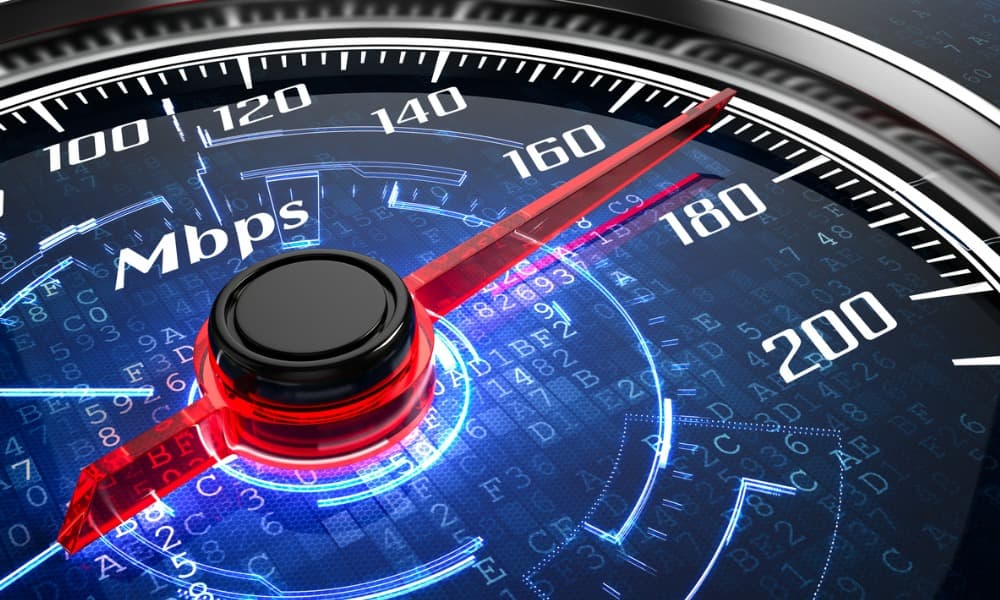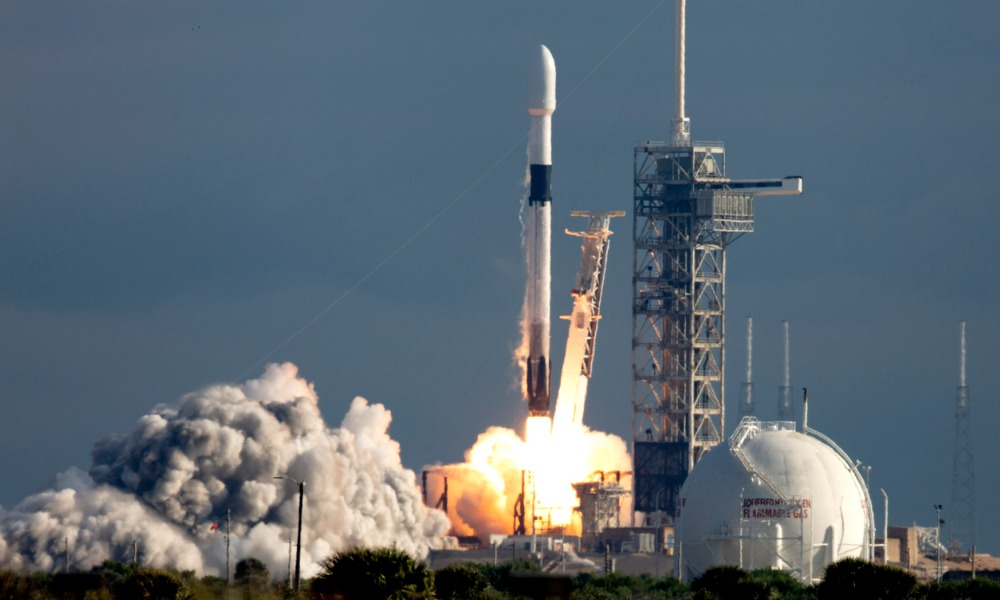If you’ve spent time outdoors on a clear night in recent months, there’s a good chance you’ve seen something strange in the sky. Stargazers worldwide have noticed trains of mysterious lights floating over their neighborhoods, mistaking them for UFOs.
While there’s a remote chance your sighting actually was a UFO, it was more than likely a constellation of Starlink satellites. These satellites are a SpaceX project providing high-speed internet to remote parts of the world but are commonly mistaken for alien spacecraft because of unusual appearance. Here’s a look at how Starlink works and what it might mean for the future of the internet.
 .
.
Starlink’s satellite constellations aim to provide global high-speed internet coverage in the coming years. Here’s everything you should know about this ambitious project.
What Is Starlink?
Starlink is an initiative that will place thousands of small satellites in low Earth orbit, just 340 miles above the surface, to provide global internet access. Having satellites orbit the planet so closely can lead to regular sightings, so it’s something people will have to get used to seeing.
These satellites only weigh 550 pounds each, making them far smaller than most other spacecraft in the sky. They’re basically like a flying router, and consumers can tap into the router by purchasing Starlink hardware for their home or business. This Starlink hardware includes a router and a satellite receiver.
The idea is that satellite internet makes the web accessible in remote locations around the world that don’t have broadband capability. However, Starlink wants to become a global provider of satellite internet services, pushing homeowners away from traditional broadband forever.
How Starlink Works
Starlink isn’t like a cellphone or 5G signal, as it has an entirely different functionality. The gist is that the satellites send internet signals to their satellite receivers, which communicate with your Starlink router.
So, Starlink is like a cross between your current internet service and a satellite television service, as information moves wirelessly between a receiver mounted on your home or business and these satellites in the sky. A cable connects the router to your satellite receiver.
When using Starlink internet, you’ll head to a web browser and make a data request. This request passes from your computer to the satellite dish you have mounted on your home. This satellite dish then broadcasts the request to a satellite orbiting the Earth, and the orbiting satellite sends the request to the ISP of the website you’re trying to visit.
The process then reverses as the data is sent to your home computer, and you can access the information you were seeking. These requests happen instantaneously, as there’s very little lag when using Starlink.
How Fast Is Starlink?

At first launch, the aim for Starlink was speeds of up to 1 Gbps. The company has revised that goal in recent months, though, and believes speeds of 10 Gbps are possible. These speeds would make the service the fastest internet in the world, as broadband services currently top out at about 1.2 Gbps.
Currently, speeds can exceed 150 Mbps, depending on your location. For example, the fastest median download speed clocked in the first quarter of 2022 was 160 Mbps in Lithuania, while the fastest recorded speed in the United States was 91 Mbps. While it’s still a way off from its goal, Starlink speeds will increase as more satellites make their way into orbit.
Launching Starlink Satellites

You might be wondering how Starlink gets its satellites into orbit. After all, sending anything into space is a noteworthy undertaking, so completing the process requires significant effort.
Starlink satellites go into orbit aboard a Falcon 9, a reusable rocket SpaceX has used over 180 times to carry people and payloads into space. These rockets haul the satellites to a parking zone about 270 miles above the surface and leave them there to begin the next step.
The satellites are equipped with solar panels and thrusters that push them further into orbit. The satellites slowly spread out from this position and eventually climb another 70 miles, putting them 100 miles above the International Space Station. The satellites get dimmer as they rise, so you’re more likely to see their lights in the sky soon after launch.
The Number of Starlink Satellites
New satellites go into orbit regularly, but there are currently about 3,000 up there. Multiple launches have occurred in 2022, and more will follow in the coming months and years.
We don’t know how many satellites will ultimately end up in space, but estimates suggest the company plans to launch at least 12,000 in the near future. The company alo intends to offer global internet service at some point, which would require between 30,000 and 42,000 satellites to achieve.
It’s worth noting that while Starlink is safe to use, there are some concerns about having so many satellites in low Earth orbit. The more debris you have in space, the more likely you are to experience collisions between satellites.
Whenever two satellites pass within a kilometer of each other, it’s called a close encounter. About 1,600 close encounters happen weekly, with more than half involving Starlink satellites.
There were near collisions between Starlink satellites and the Chinese Space Station in July and October of 2021, and European Space Agency’s Aeolus satellite had to turn on its thrusters to avoid a collision with a Starlink satellite in 2019. NASA is concerned about the potential for crashes, which will only grow as more satellites enter orbit.
What the Future May Hold
Starlink wants to become a global internet provider with hardware in homes and businesses worldwide. There will likely be pushback from governments all over the world because of the volume of satellites it would take to achieve this goal.
What do you think about these future plans for Starlink internet? Let us know in the comment section below, and don’t forget to share this article with the space junkie in your life.